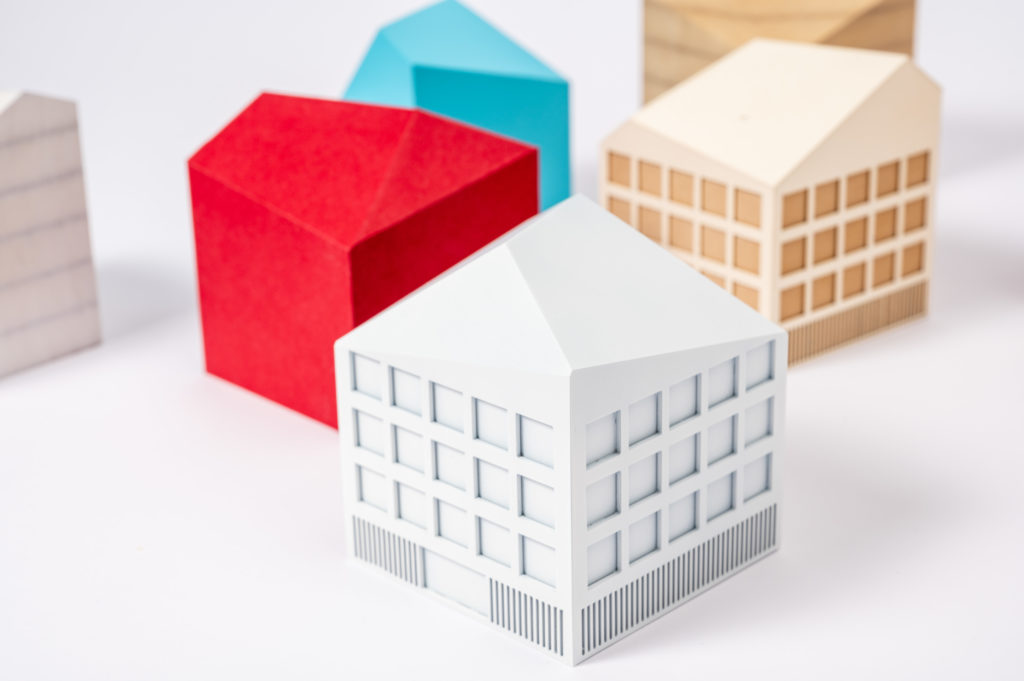
There are two routes to choose from. In this application, professional model builders would work with a dense polyurethane block material (Renshape, Ureol, Sika Block, Obomodulan). These materials have several advantages like they’re fast to work with, have no internal stress, and can be painted with several finishes. On the other hand, these highly specialized models are too expensive to use during the design process.
MDF (Medium Density Fiberboard) is readily available in most parts of the world and can even be picked up as scraps from carpenters for model building purposes. On the scale of 1:200, a 16mm MDF plate relates to a typical floor height (~3.2m), and on the scale of 1:500, a 6mm MDF does the same (~3m). The relationship between material thickness and floor height allows us to incorporate the natural divisions of a glued-up block into our models.
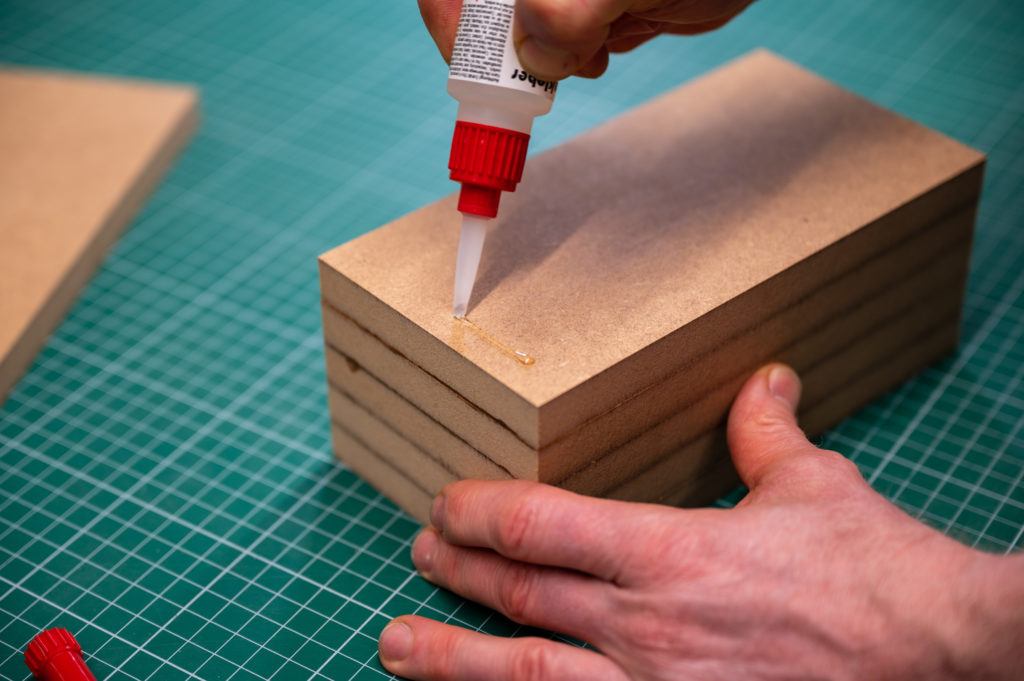
Gluing
MDF is best glued with white glue or medium viscosity super glue.
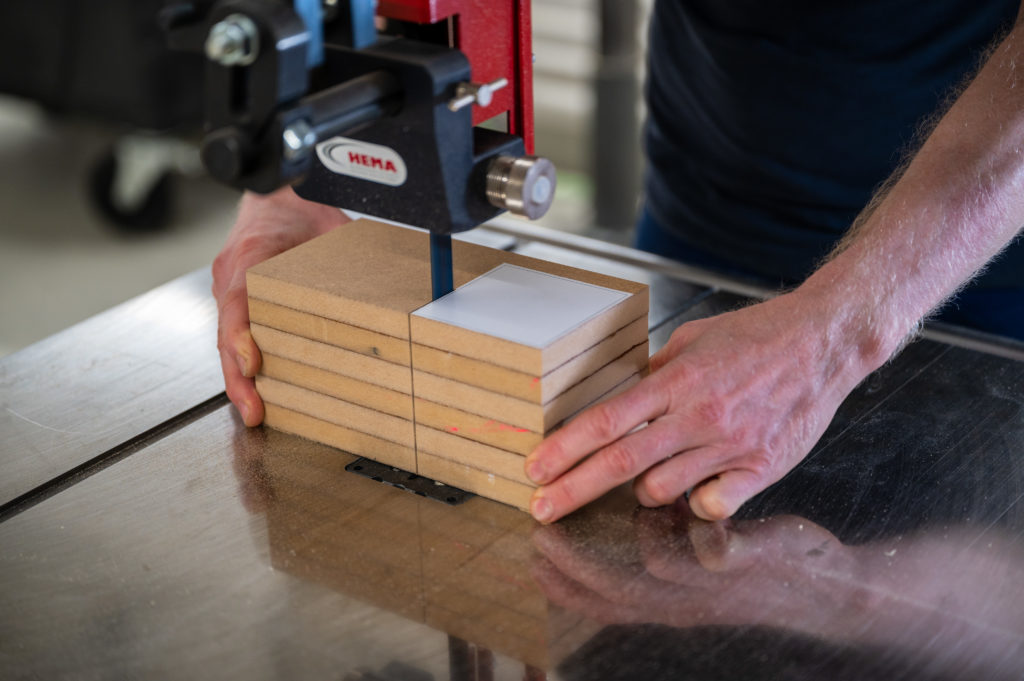
Cutting
MDF blocks can be cut to rough dimensions with the bandsaw.
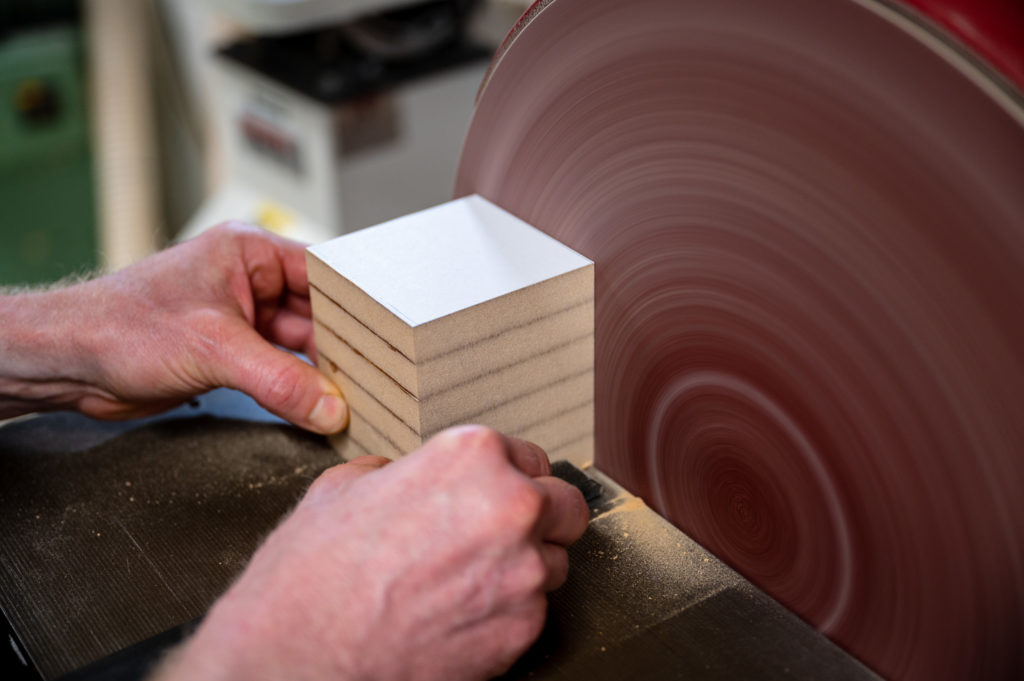
Template Sanding
MDF can be shaped on the disc sander to precise dimensions with the help of a printed layout that is applied with removable spray adhesive.
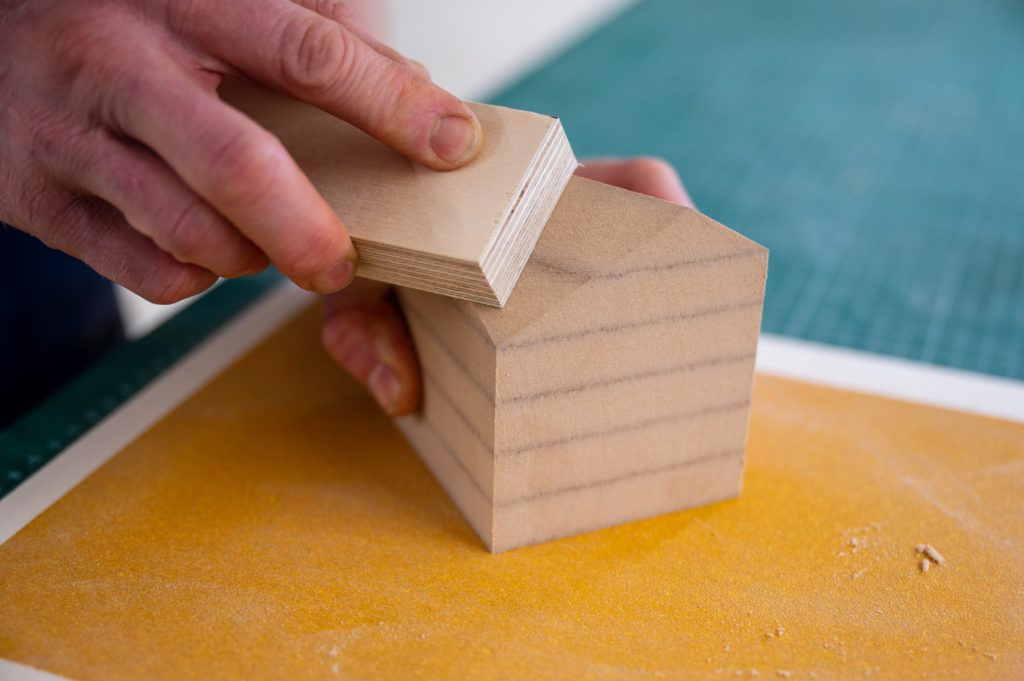
Final Sanding
Is best done by hand with 220 grit sandpaper mounted to a flat surface or with a self made sanding block.
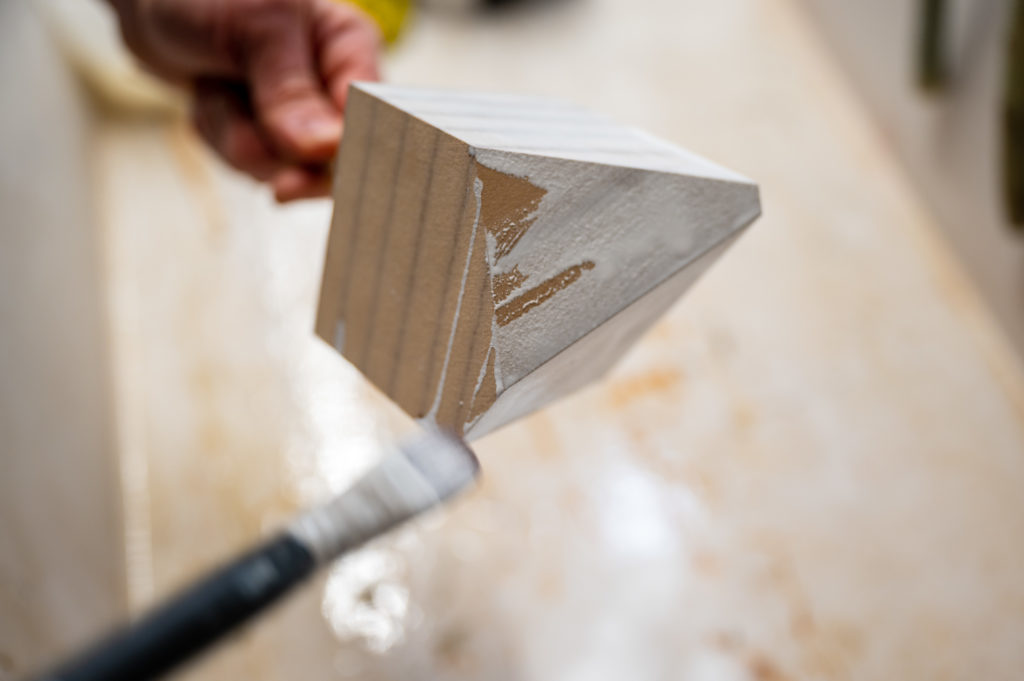
Tinting
Applying emulsion paint thinned down with water with a soft brush results in a seethrough finish. This technique is ideal for buildings that are relevant to the context of your design.
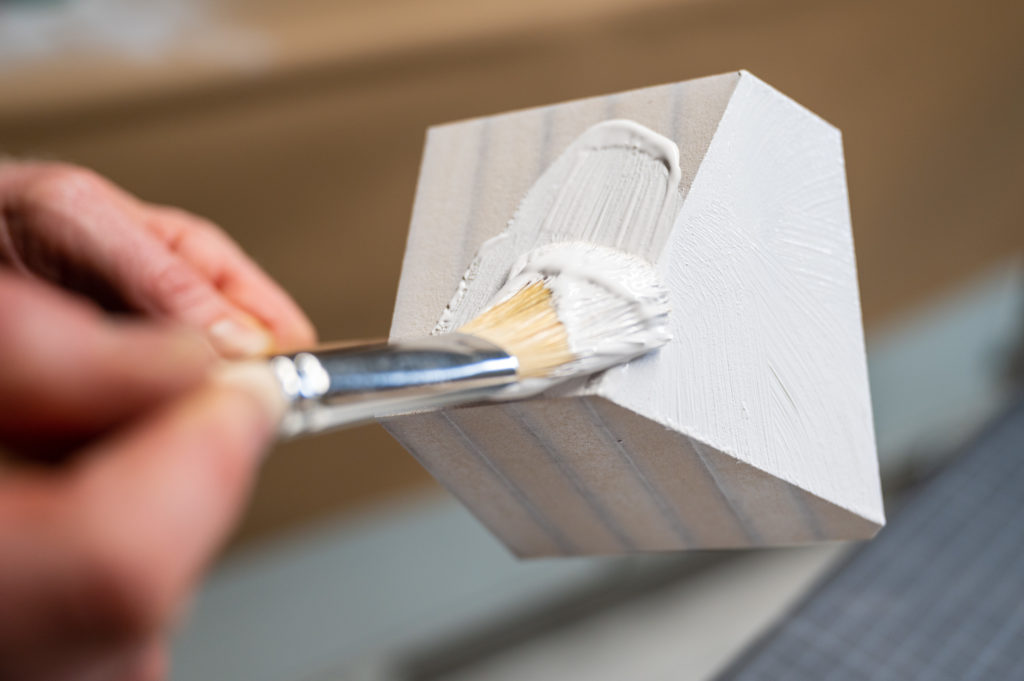
Filler
Brush on a thick layer of emulsion paint as filler for MDF. After drying, the block is sanded with 220 grit sandpaper and ready for spray painting. Repeat the process if the block still feels porous after sanding
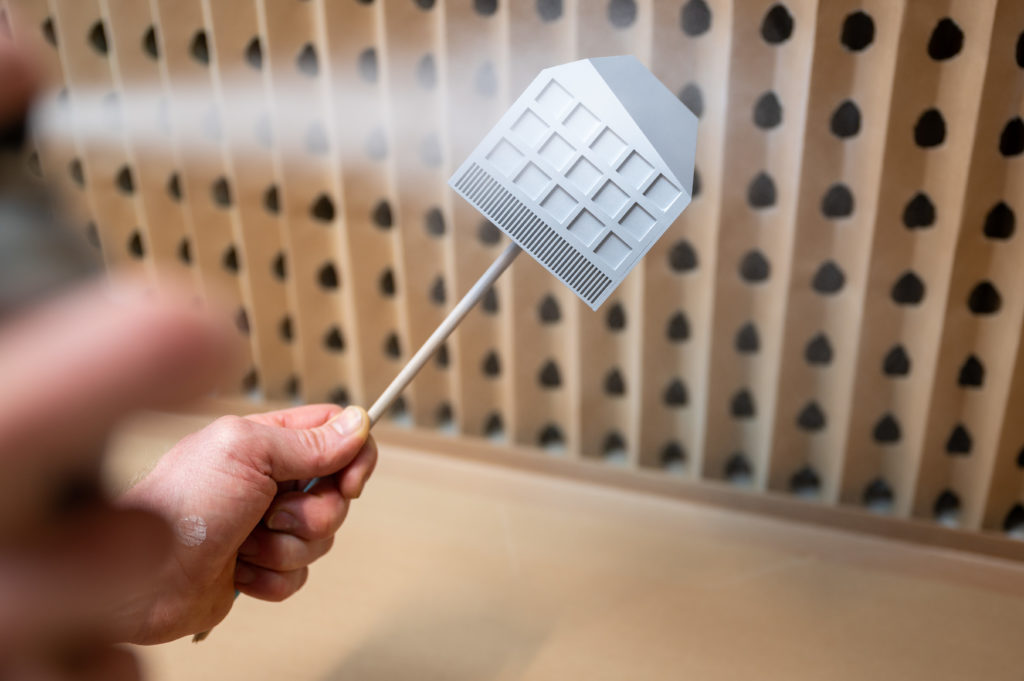
Painting
After sanding the filler, you can apply any acrylic spray paint to color your volume.
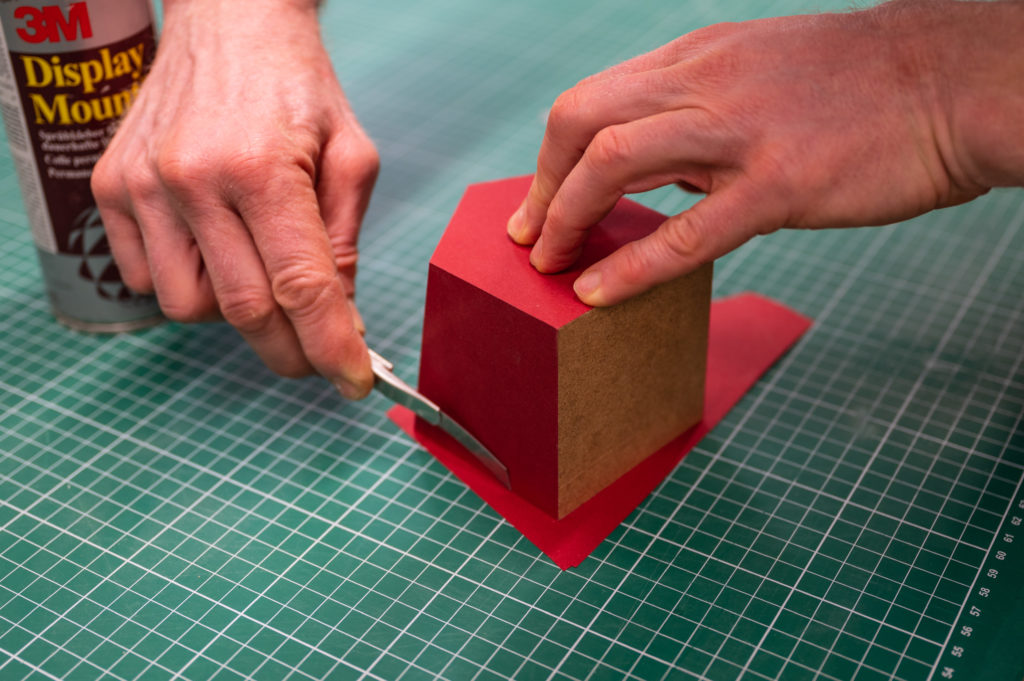
Paper Laminate
For a discrete mat finish paper can be glued to the volume by applying spray adhesive.
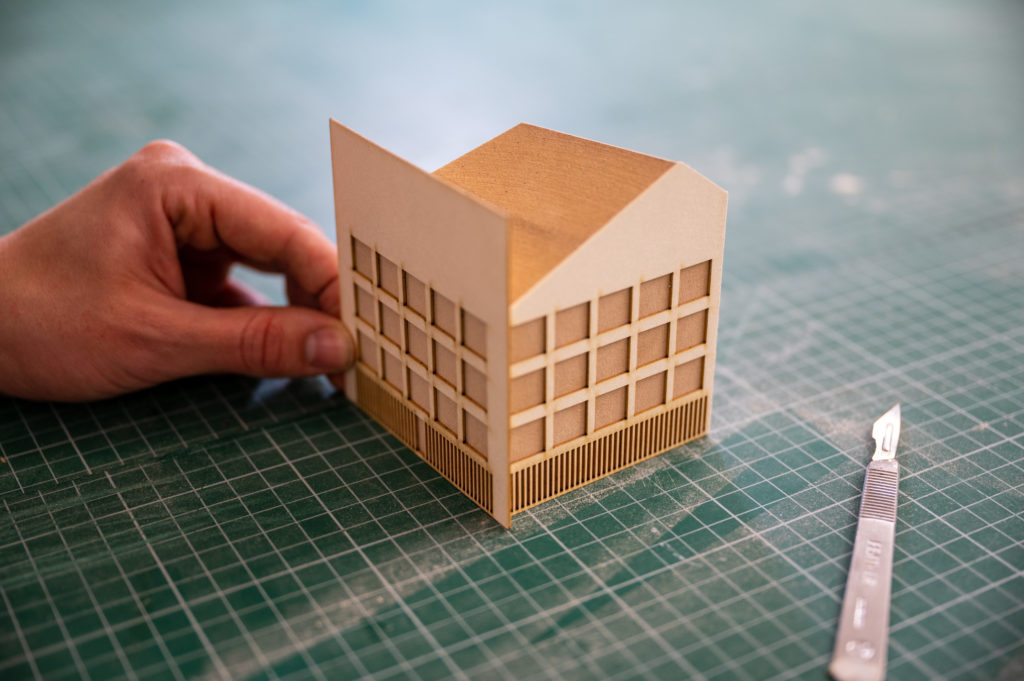
Facade
A simple way of adding detail to the block is to glue a laser-cut acrylic or card facade to the volume. This technique requires additional sanding and finishing and shows the method’s potential for designing with models – the model transforms as the project evolves.